I’m excited that I was able to figure out how to do the Nordic ø on my keyboard so that I could use the Danish spelling of Copenhagen. Small victories! “Havn” means harbor and “Køben” means merchant so København means Merchant’s Harbor and the correct pronunciation is something like “KupinHown.”
Six days into my stay in our swishy rental with the endless windows, incredible view of the inner harbor, the Playhouse, and The Kissing Bridge (named for how it separates and comes together, not what people do on it), I have done a LOT of walking around the city already. The prevailing weather has been bright sun and frequently quite windy, a result of Denmark being so flat (even the crops are low) that there is nothing to block or slow the wind coming from the coast.
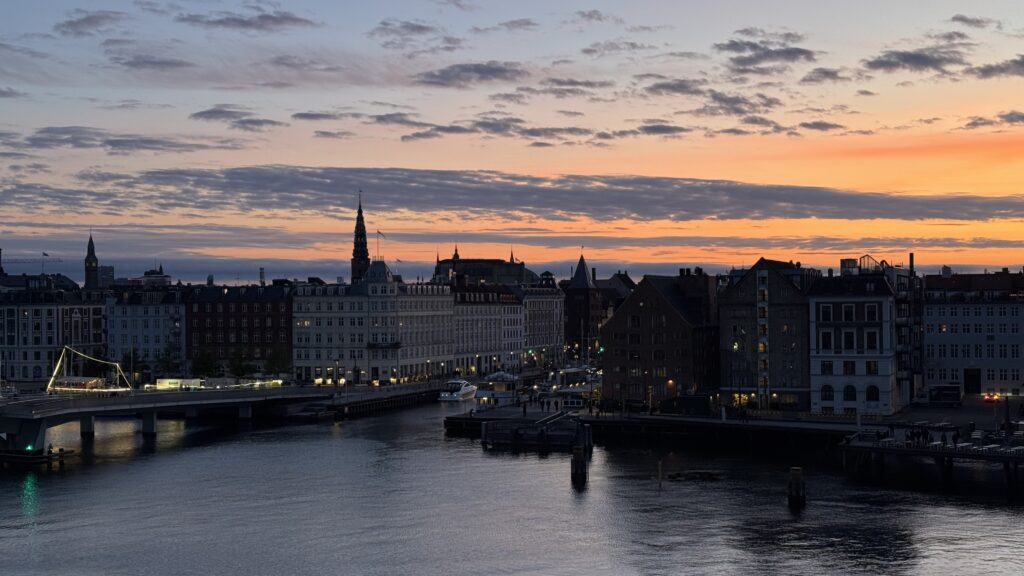
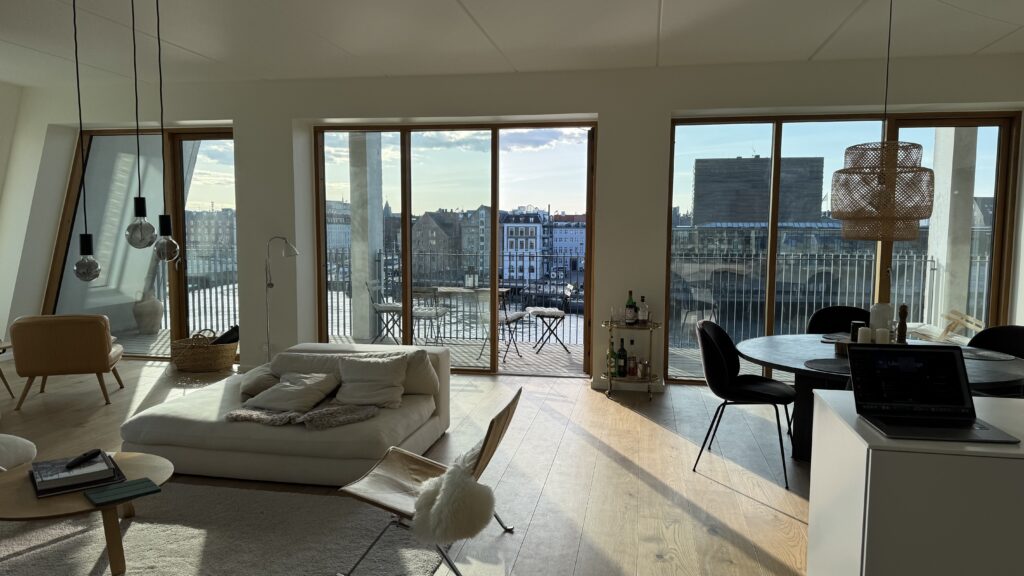
My first impressions (not my fist visit but previous times were either very brief or so long ago I can’t remember), are what a clean, safe, and pleasant town this is. The civic leaders, with input from the citizenry, continue to go to great lengths to provide excellent public spaces and infrastructure for the residents to enjoy. And they do just that. When the sun is shining, and even when it’s not, the Danes are out in force chatting, visiting, drinking and always on their bikes (with no helmets). There are places to sit everywhere, chairs or benches or beautiful wooden decking, in front of new harbor apartment buildings…
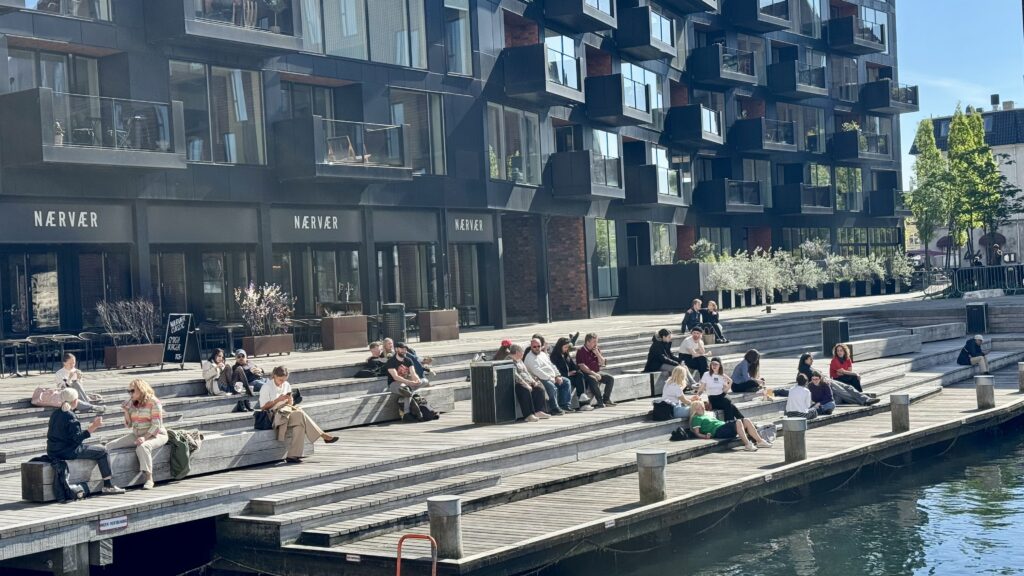
…as well as in front of all the large public buildings such as the opera house, the playhouse, and the library, all of which are architecturally significant buildings built within the last 30 years. There is also a healthy cafe presence including in public plazas, a la Paris, but also tucked into many buildings, and on houseboats moored in the charming canals. Also, many outdoor food halls, including Broens, the one right outside our development, and Torvehallerne and Reffen, two others we visited with Anders, John’s son.
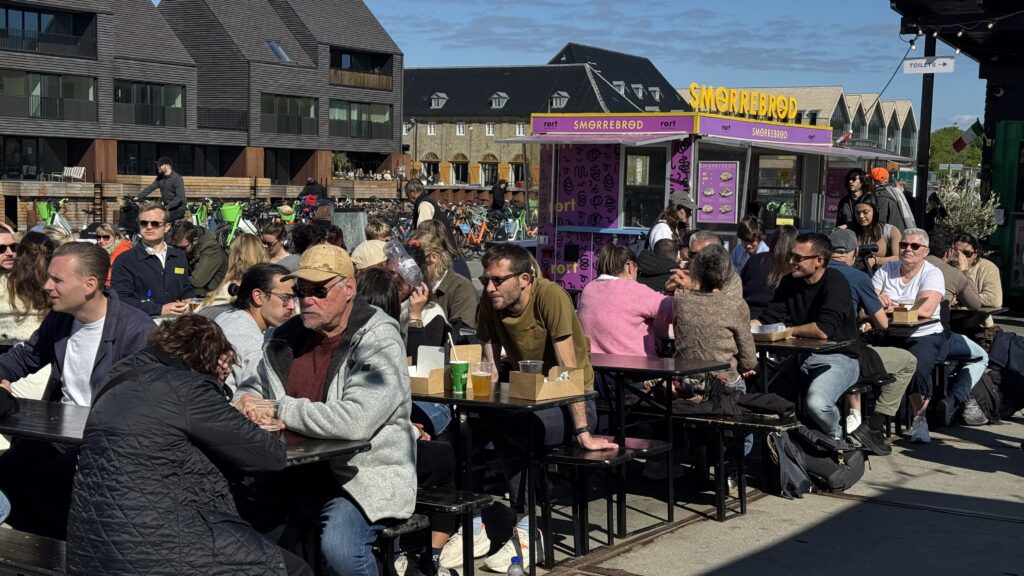
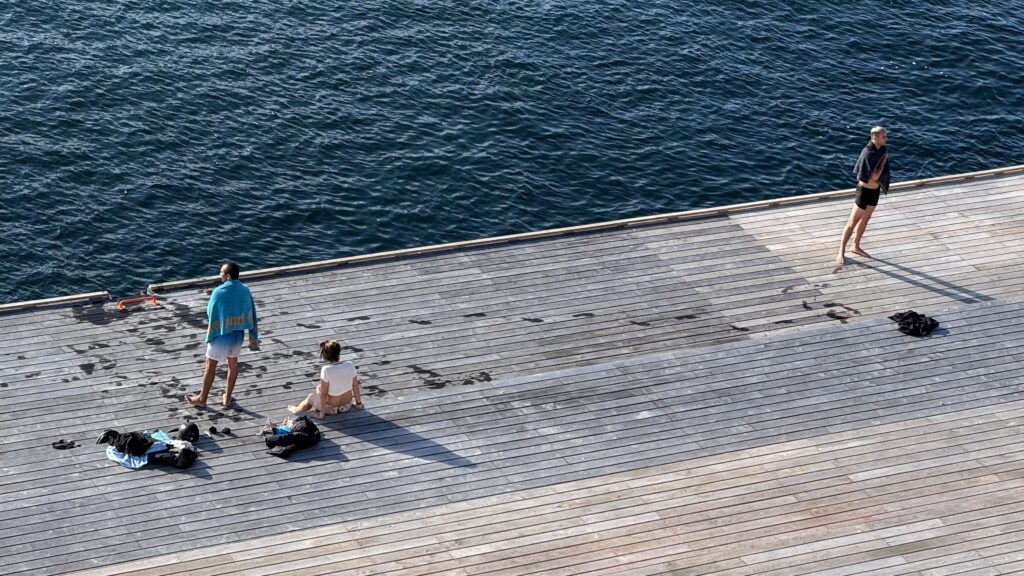
It is a lively, attractive city that seems to be much enjoyed by its residents. John noted that whenever he sees women jogging, they are always chatting to each other (and he’s been noticing the pretty young Danish women a bit too much for my taste). John’s Danish mother, Ingeborg, was a party girl in her time so she was true to the national personality.
It’s also true that there is little ethnic diversity evident in this town. On my flight up from London, I sat next to a Nigerian fellow (18 years as a professional soccer player) who is married to a Danish woman and lives between London and Copenhagen, where his younger daughter is still in high school. When he heard I would be in Copenhagen for 5 weeks, he said that he couldn’t possibly spend that many weeks there continuously. But, he noted, his wife loves it “because she’s Danish.”
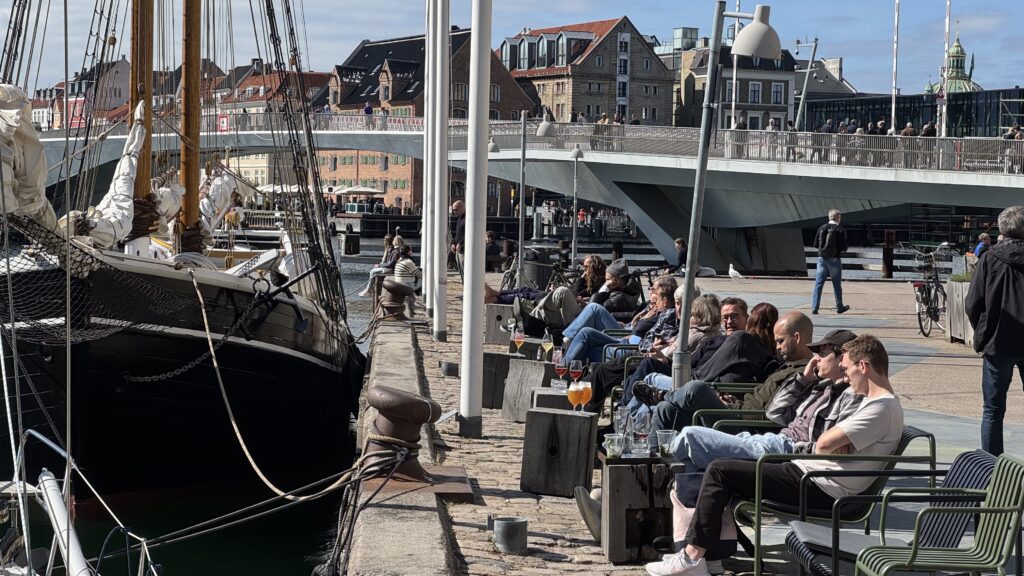
In addition to the fab public spaces, the city boasts clean streets, amazing bike lanes that are heavily used as most people commute by bike, as well as easy public transit, both metro and buses. In the six days I’ve been here so far, I have seen no litter (though a few overflowing public trash containers), one beggar, no tents, and a bit of graffiti.
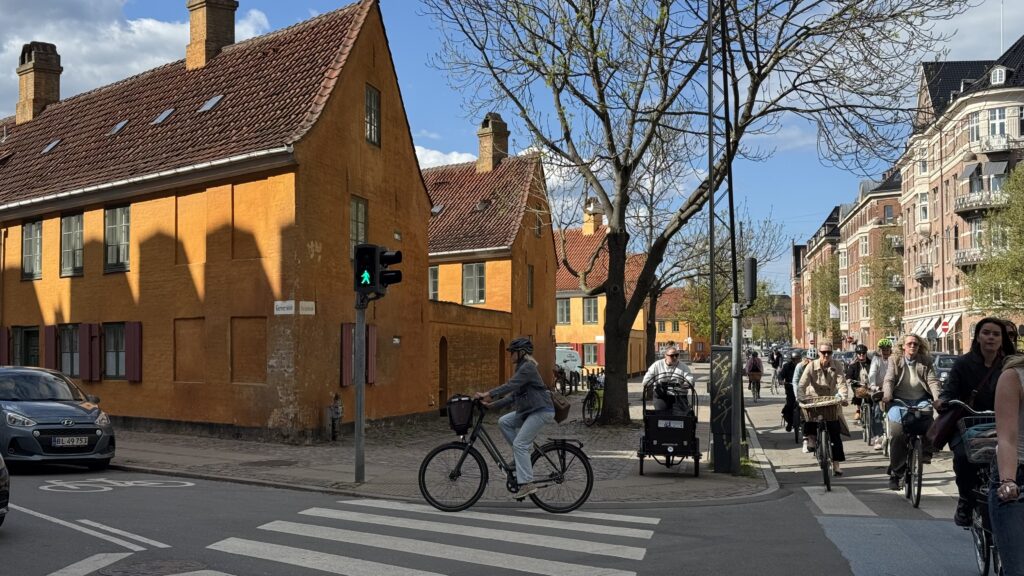
I have to confess to an extreme weariness and discouragement with the problems in the Bay Area, in particular Oakland, Berkeley, and San Francisco where I spend most of my time. The several decade failure to build housing combined with the heightened inequality from the tech boom (Bay Area), our unrestrained approach to capitalism (USA), and a bad hangover from the pandemic has resulted in what feels like an intractable culture of homelessness, dumping, litter, graffiti, drugs, and hopelessness, and has made this Bay Area native desperate for an escape, at least temporarily.
I read two books in preparation for this trip, each published in 2015, so a decade out of date. They were The Year of Living Danishly by Helen Russell and The Almost Nearly Perfect People by Michael Booth. Both authors are British and both lived in Denmark for an extended period. Booth covers all the Nordic countries and concludes that the Danes are the most social, as Finns and Norwegians are famously taciturn in comparison, and Danes also have a very high level of trust. As Helen Russell learns, parents think nothing of leaving their baby outside a restaurant in a pram while they eat a meal inside. Trust in one another, Booth contends, is what allows Danes to pay such high taxes and feel good about, or at least accept, where their money is going.
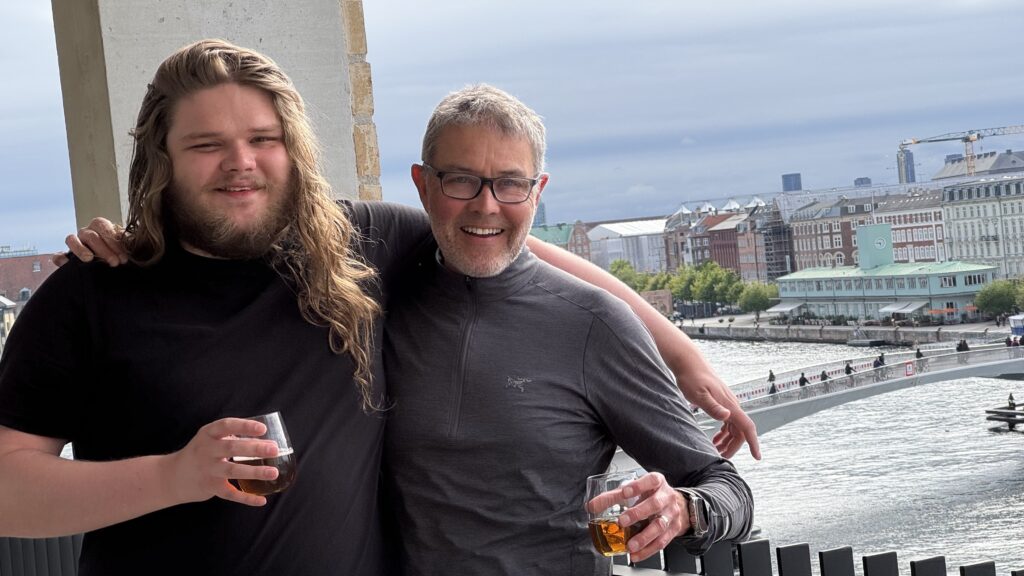

Being in Copenhagen is providing me a much needed reprieve from my own country’s failures. And while I’m well aware of the massive differences between Denmark and California, it is still hard to accept the contrast between the two places. Does it really require a tiny homogeneous population to have the levels of trust required to create a high functioning, mutually supportive, more equal society such as this? Apparently so.
Hi April, I’m glad you are enjoying Denmark. My boyfriend, Peter, used to live in Denmark when he was a child and Hanne, one of my housemates is from Denmark. I don’t know if you have noticed this yet, but Danes typically have no filter and will tell you exactly what they think about you! Politically correct behavior is not a Danish trait! Enjoy the rest of your trip! Peter and I will be in Czechia for two weeks this summer. One of these days I want to visit Denmark!
Wow, this makes me want to move to Copenhagen where everything is clean and people use bikes. enjoy it while you can!
Another well written blog that takes me away from the chaos of the USA and into the fun world of April Travels Abroad. Thanks!
Loved reading it and like many others longed for a better environment (politically , ecologically, socially )to live in, but after having lived in so many different countries I have learnt that in the end the place where we find long term happiness is the one that offers us maximum family and friends.
This is what makes travel so enjoyable.. Enjoy new places and faces combined with the joy of coming home
Safe and happy travels April